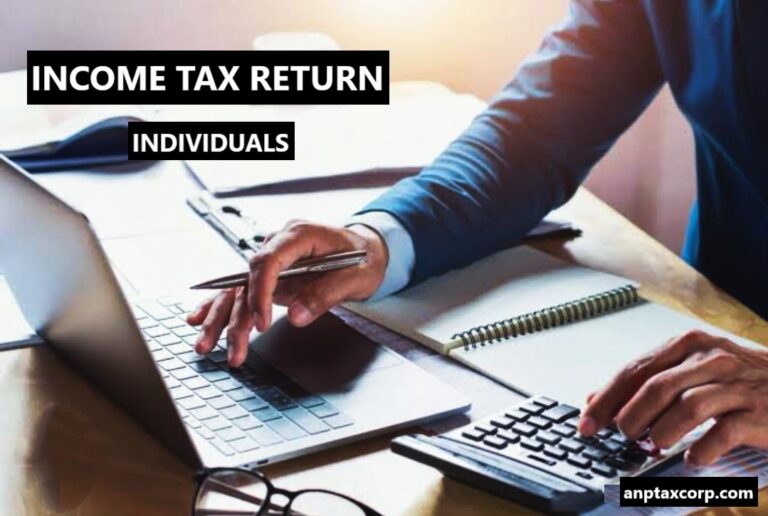Income Tax Slabs & Rates Applicable to Individuals in FY 2023-24 (AY 2024-25)
For the financial year 2023-24, the default tax regime is the New Tax Regime, offering individuals a lower rate of taxation under section 115BAC. However, those individuals who prefer the Old Tax Regime must actively exercise their option under section 115BAC(6) when filing their Income Tax Return (ITR) for the financial year 2023-24.
The individuals opting for concessional rates in the New Tax Regime will not be allowed certain Exemptions and Deductions (like 80C, 80D, 80TTB, HRA) available in the Old Tax Regime. However, the deductions under section 80CCD (2)-Deposit in NPS, 80CCH (2)- Deposit in Agniveer Corpus fund, Deduction under section 57(iia)-family pension income and 80JJAA- deduction for additional employee cost shall be available in the New Tax Regime.
A tax rebate has been introduced under the new tax regime on income up to Rs.7 lakhs. Therefore, individuals do not have to pay income tax under new tax regime, if their taxable income is up-to Rs.7 lakhs. The standard deduction of Rs 50,000 has been extended to the new tax regime also. The highest surcharge rate of 37% has been reduced to 25% under the new tax regime, benefiting the taxpayers earning more than Rs 5 crore.
1. Income Tax rate
(i) Old Tax Regime:
| Slabs | Age below 60 years | Senior Citizens (< 80 years) | Super Senior Citizens (80 years & Above) |
| Up-to Rs.2,50,000 | Nil | Nil | Nil |
| Rs.2,50,001 to Rs. 3,00,000 | 5% | Nil | Nil |
| Rs. 3,00,001 to Rs. 5,00,000 | 5% | 5% | Nil |
| Rs. 5,00,001 to Rs. 10,00,000 | 20% | 20% | 20% |
| Above Rs. 10,00,000 | 30% | 30% | 30% |
(ii) New Tax Regime:
| Slabs | Rate of Tax |
| Up-to Rs. 3,00,000 | Nil |
| Rs. 3,00,001 to Rs. 6,00,000 | 5% |
| Rs. 6,00,001 to Rs. 9,00,000 | 10% |
| Rs. 9,00.001 to Rs. 12,00,000 | 15% |
| Rs. 12,00,001 to Rs. 15,00,000 | 20% |
| Above Rs. 15,00,000 | 30% |
2. Rebate under Section 87A
In the fiscal year 2023-24, the rebate under Section 87A remains constant in both the old and new income tax regimes. For resident individuals with taxable income up to Rs 5,00,000, a tax rebate of Rs 12,500 or the amount of tax payable, whichever is lower, is applicable. However, under the new income tax regime for FY 2023-24 (AY 2024-25), a modification has been introduced for those with taxable income exceeding 5 lakhs. In this scenario, resident individuals with taxable income up to Rs 7,00,000 will now qualify for a Rs 25,000 tax rebate.
3. Surcharge
Surcharge is an additional charge levied on the individuals taxable Income above the specified limits. It is charged on the amount of income tax calculated as per applicable rates.
Rates of Surcharge under different slabs are given below:
| Taxable Income | Rate of Surcharge |
| Above ₹ 50 lakh – up to ₹ 1 crore | 10% |
| Above ₹ 1 crore – up to ₹ 2 crore | 15% |
| Above ₹ 2 crore – up to ₹ 5 crore | 25% |
| Above ₹ 5 crore | 37% |
As per Budget 2023, the highest surcharge of 37% has been reduced to 25% for new tax regime which is effective from 1 April 2023.
Maximum rate of Surcharge on Income by way of Dividend or Income under the provisions of Sections 111A, 112, 112A and115AD is 15%.
4. Marginal Relief
In the 2023 Budget, alterations were made to the income tax slabs within the new tax regime, introducing a substantial tax rebate of ₹25,000 for individuals with a taxable income of up to ₹7 lakh. However, a noteworthy consequence emerges for those with incomes marginally surpassing ₹7 lakh, resulting in elevated tax liabilities. To address this issue, a mechanism known as marginal relief has been implemented.
In the new tax structure, a mere ₹50 increase in an individual’s taxable income above ₹7 lakh causes the forfeiture of the ₹25,000 rebate under Section 87A. This triggers the imposition of applicable slab rates on the entire taxable income, leading to an augmented tax burden.
This paradoxical situation, where a slight income increase results in higher tax payments, is mitigated by marginal relief, ensuring that the tax payable doesn’t exceed the income exceeding ₹7 lakh. This relief mechanism aims to alleviate the burden by preventing excessive taxation on the incremental income, providing a balanced approach in the new tax landscape.
Similarly, another marginal relief on surcharge is also available under income tax. Marginal relief on surcharge is provided in cases where the Surcharge payable exceeds the additional income that makes the person liable for Surcharge. Under this provision of relief, the amount payable as Surcharge shall not exceed the amount of income earned exceeding ₹ 50 lakh, ₹ 1 crore, ₹ 2 crore or ₹ 5 crore respectively.
5. Health & Education Cess
Health & Education cess @ 4% shall also be paid on the amount of income tax plus Surcharge (if any). The Health and Education Cess is nil if the total income of a ‘specified fund’ as referred to section 10(4D) includes any income in respect of securities as given under section 115AD(1)(a).
For a More Detail Reading on such provisions Readers can CLICK HERE
To Know the recent changes in Section 87A CLICK HERE
Also Read
6 Pivotal Cash Transactions that Might Prompt the Income Tax Department Issuing Notice on You
New Rule to Determine NRI Status of an Individual with effect from AY 2021-22

Somebody essentially lend a hand to make significantly posts I might state That is the very first time I frequented your web page and up to now I surprised with the research you made to create this particular put up amazing Excellent job